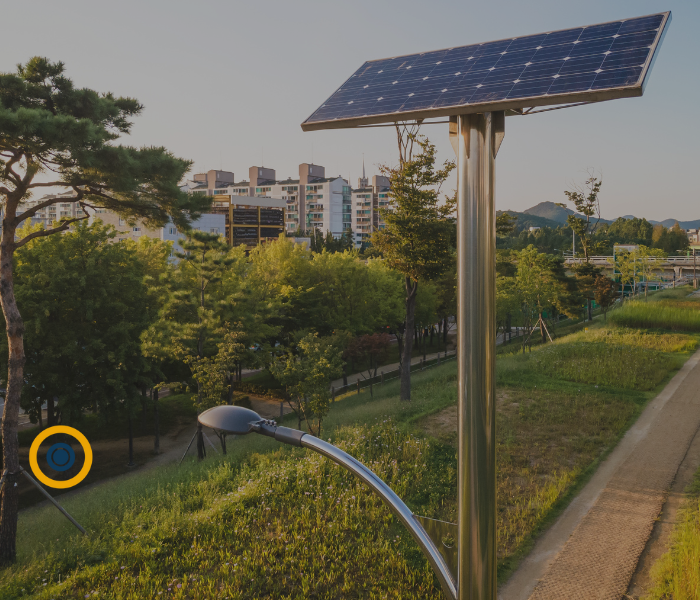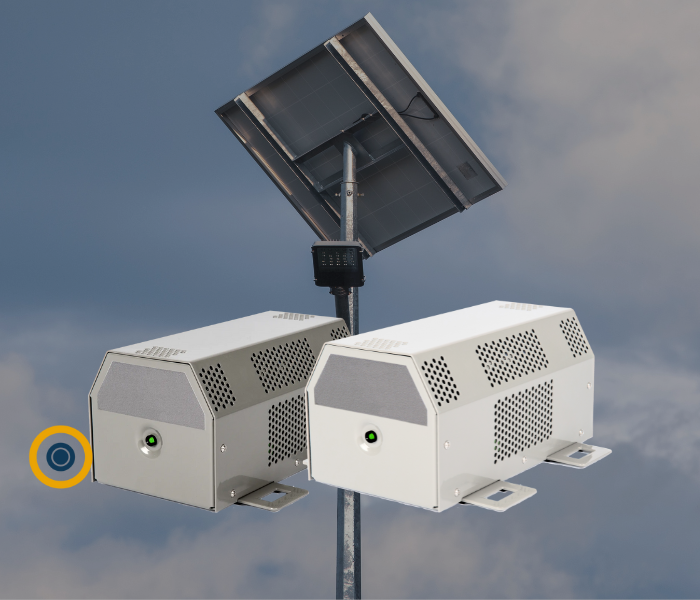
Solar batteries: what are the differences between Lead-acid, Ni-MH and Lithium-ion?
Solar batteries play a key role in storing the energy produced by photovoltaic panels. These solutions allow energy to be stored for powering and autonomously operating solar installations: lighting, display panels, traffic lights etc.
Several technologies and electrochemicals can be used to design a solar battery. However, the most common solar batteries are made of Lead-acid, Ni-MH and very recently Lithium-ion.
Lead-acid solar batteries: a limited technology
lead-acid is an electrochemistry historically used for battery design. The lead-acid battery consists of lead and plastic plates that are immersed in an electrolyte, usually sulphuric acid. The lead and plastic plates form the positive and negative electrodes of the battery.
Advantages of lead-acid
- Reliability: Lead-acid batteries are reliable and can last for many years when used and maintained properly.
- Low cost: Lead-acid batteries are often the most affordable of the different types of solar batteries, making them more competitive for buyers looking for a low-cost battery.
Limits of lead-acid
- Required regular maintenance: Lead-acid batteries require regular maintenance to perform optimally, which can be tedious and expensive.
- Toxic gases: Lead-acid batteries can produce toxic gases when deep discharged, i.e. discharging more than 80% of their energy capacity, which can be hazardous to health and the environment.
- Weight: Lead-acid batteries are heavy and bulky, which can cause problems for transport and installation depending on the space available.
Ni-MH solar batteries: A commonly used technology
Ni-MH (Nickel-Metal Hydride) is a battery technology that uses a metal hydride alloy as the anode material, nickel oxyhydroxide as the cathode material and an alkaline electrolyte to allow the circulation of ions.
This battery technology has been democratised over time to overcome the limitations of lead by offering a more efficient and durable alternative. Today, Ni-MH is widely used in solar battery design because of its advantages.
The strengths of Ni-MH
- Adapted to extreme temperature conditions: The first feature of Ni-MH is its ability to withstand harsh conditions (between -25°C and +80°C). This feature allows solar batteries made with Ni-MH to be installed in humid or hot regions such as some countries in Africa, Asia or the Middle East.
- Longer life than lead-acid solar batteries: Ni-MH solar batteries have a longer life than lead-acid batteries, which means they require less frequent replacement and provide optimal long-term performance when properly maintained.
- Less maintenance required: Ni-MH batteries require less maintenance than lead-acid batteries, which can be an advantage in minimising costs.
- Easily transportable: One of the major advantages of Ni-MH batteries is that they are very easy to transport by air, land or sea compared to other technologies such as lithium. Their transport is not subject to specific regulations as they are not considered “hazardous materials”.
Beyond their advantages, Ni-MH solar batteries are now competing with more modern and promising technologies.
Lithium-ion solar batteries: A promising technology
Compared to Ni-MH, the democratisation of lithium-ion in solar is more recent. Lithium-ion generally offers better performance than its lead and Ni-MH predecessors and can meet new needs in terms of solar energy storage.
Among the multitude of lithium-ion categories on the market, LiFePO4 (Lithium Iron Phosphate) batteries are the most widely used.
Strengths of LiFePO4 solar batteries :
- High energy density: LiFePO4 batteries have a very high energy density, which makes them more efficient for solar energy storage. They have 3 times the energy density of e.g. lead-acid batteries.
- Longer lifespan: LiFePO4 batteries last 10 times longer than lead-acid batteries without any loss in performance. They also last longer than a Ni-MH battery.
- On-board intelligence: As with all lithium batteries, LiFePO4 solar batteries have an integrated BMS (Battery Management System) board. This electronic management board regulates the operation of the battery by optimising charging and discharging times, protecting it against various risks (overvoltage, short-circuit, undervoltage, etc.) and optimising its performance over the long term.
In conclusion, the choice of solar battery technology depends on the customer’s project needs. The Ni-MH solar battery is an effective solution for a solar street light in a hot area. However, to power an outdoor billboard that operates 24/7, the LiFePO4 battery is a preferred alternative due to its high energy density.
Belios assists manufacturers and equipment suppliers in selecting the most suitable battery for their needs and project. From customised design to industrial production: Belios develops your solar batteries.
Would you like to have more information about Belios solar batteries or entrust us with your project? Contact our specialists.


